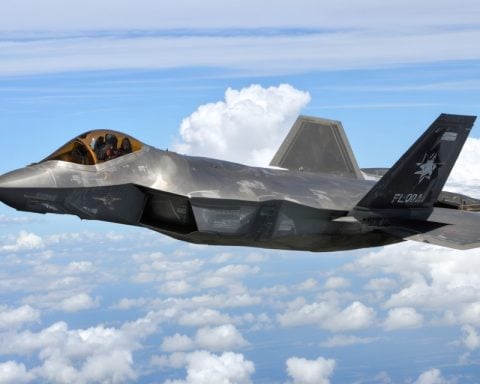- India considers purchasing Russia’s Su-57 Felon stealth fighter amidst evolving defense alliances.
- Historical military ties with Russia contrast with a growing interest in Western military technology.
- The Su-57’s fifth-generation stealth capabilities are enticing but untested in combat, raising reliability concerns.
- Production issues and delays in Russia may impact India’s air force modernization efforts.
- Purchasing the Su-57 could complicate India’s defense partnership with the U.S., especially after past purchases like the S-400 missile system.
- India’s decision will significantly influence its defense relationships and the regional balance of power.
In a world where defense alliances are shifting like sand, India stands at a crossroads, contemplating a game-changing decision: will it purchase Russia’s Su-57 Felon stealth fighter?
With historical ties to Moscow, India has collaborated on various weapons programs, including the BrahMos missile. Yet, recent trends paint a picture of an emerging pivot toward Western military technology. This transition poses a quandary, especially as the U.S. strengthens its military sales to India, offering a range of sophisticated aircraft like the P-8 Poseidon and Apache helicopters.
The allure of the Su-57 is tempting, but skepticism looms. Despite its fifth-generation stealth capabilities, the Su-57 has not yet proven itself in combat, raising concerns about reliability. Additionally, Russia’s ongoing production issues and delays could hinder India’s aspirations of securing a formidable air force.
Acquiring the Su-57 could also strain India’s burgeoning defense relationship with the U.S., which has already been tested by India’s prior purchase of the Russian S-400 missile system. While the U.S. exhibited leniency in the past, the stakes are higher now, as the Pentagon closely monitors India’s military choices.
As the narrative unfolds, it remains to be seen whether India will seize this opportunity or continue on a path toward strengthening ties with Western powers. In navigating through this complex geopolitical landscape, one thing is clear: India’s next move could redefine its defense alliances and alter the balance of power in the region.
Will India Choose the Su-57? The High-Stakes Decision Reshaping Defense Alliances!
The Future of India’s Defense: Su-57 Felon vs. Western Technology
India’s consideration of Russia’s Su-57 Felon stealth fighter raises significant questions about its defense strategy and geopolitical alliances. The landscape of military procurement is rapidly evolving, and the implications of this potential purchase could stretch far beyond just aircraft acquisition.
Features of the Su-57
The Su-57 Felon boasts several advanced features:
– Fifth-generation stealth capabilities: Designed to avoid radar detection.
– Supermaneuverability: Enables agile maneuvers and vertical take-off/landing.
– Multirole capabilities: Engages in a variety of combat operations, including air-to-air and air-to-ground missions.
– Integrated avionics: Employs advanced radar and sensor fusion for situational awareness.
Pros and Cons of Acquiring the Su-57
Pros
– Enhanced Air Superiority: Strengthening India’s air capabilities against regional adversaries.
– Historical Ties: Continuing collaboration with Russia regarding defense technology.
Cons
– Concerns Over Reliability: Limited combat history raises skepticism about actual performance.
– Production Delays: Ongoing issues in Russia’s military-industrial sector could affect delivery schedules.
– Strain on U.S. Relations: May impact defense partnerships with Western countries, especially the U.S.
Market Forecast: Trends in Global Defense Procurement
– Growing Interest in Stealth Technology: Countries increasingly favor stealth capabilities, creating a competitive market for advanced aircraft.
– Shift Toward Western Military Technology: Many nations, including India, are diversifying suppliers amid geopolitical uncertainties.
Key Limitations of the Su-57
– Operational History: The Su-57 has not been tested extensively in combat, leaving questions about its effectiveness.
– Cost and Economic Considerations: The financial viability of the purchase against India’s economic interests and fiscal constraints.
Common Questions About India’s Decision on the Su-57
1. How does the Su-57 compare to other fighter jets?
The Su-57’s stealth capabilities make it competitive with Western counterparts like the F-35 and F-22. However, the latter jets have proven combat records that the Su-57 lacks.
2. What are the ramifications of this purchase for India’s relationship with the U.S.?
If India opts for the Su-57, it may complicate its defense relationship with the U.S., particularly because of the existing sanctions related to the S-400 system. The U.S. might reconsider its defense supplies to India.
3. What are the potential long-term impacts on regional security?
Acquiring the Su-57 could shift the balance of military power in South Asia, potentially provoking reactions from neighboring countries like China and Pakistan, thereby influencing regional security dynamics.
For further insights into India’s defense landscape, check out India Defense News.
As India weighs its options, the decision regarding the Su-57 will be pivotal—not just for its air force, but for the broader geopolitical scenario in the Asia-Pacific region.







